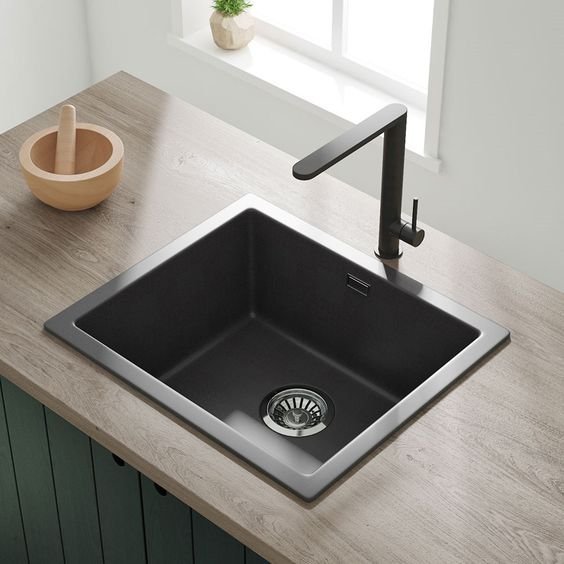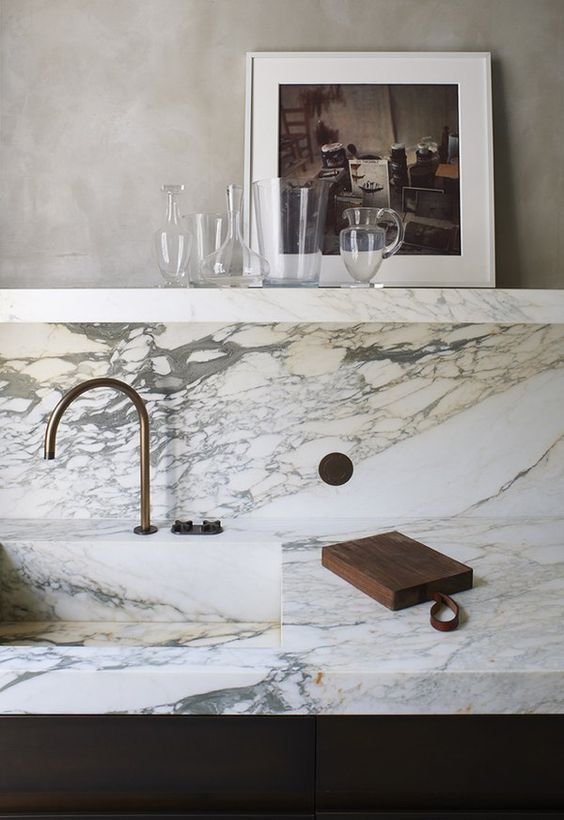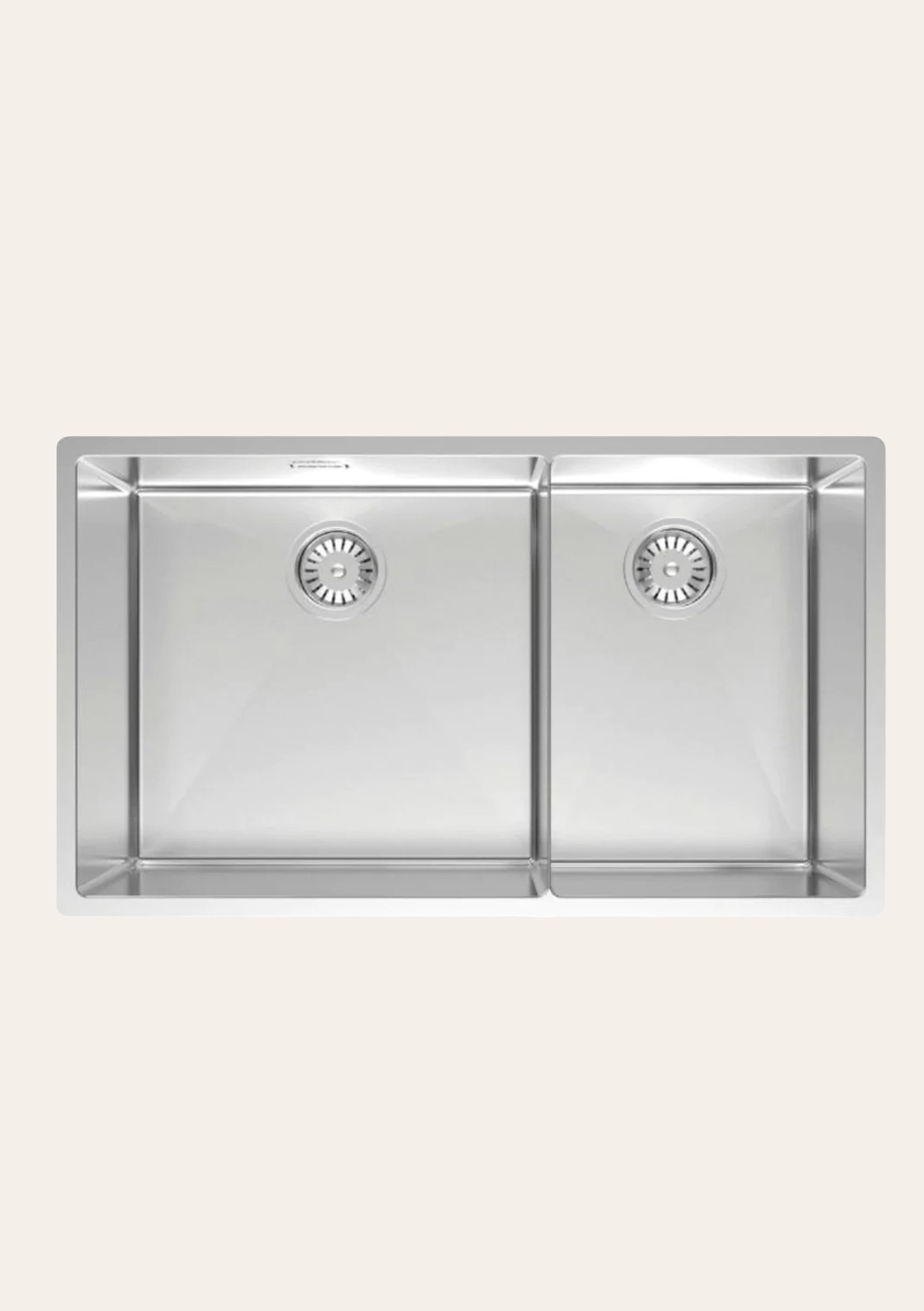How To Choose A Kitchen Sink
The kitchen as a space can be overwhelming and the sink is no exception – if you’ve made a start on planning, you’ll know it’s easy to get sucked into the vortex of options. From sink styles and trends to material and size, there’s lots to consider, alongside your lifestyle.
Whether you’ve got a big or small kitchen makeover on your hands, the below is a helpful guide covering all the basics of choosing a kitchen sink.
1. Material
I’m loving feature metallics like the Vita Double Kitchen Sink in brushed gun mental from ABI Interiors or the Mercer Aurora Double Sink in brass from The Kitchen Hub
Stainless steel sinks:
Accounting for around 70 percent of global production, stainless steel is the most popular material for kitchen sinks – and for good reason: it’s affordable, durable, easy to install, low maintenance, and available in various configurations to suit all designs. Do bear in mind, polished stainless steel can scratch easily and make water marks more visible after cleaning. It can also be quite noisy when items are dropped in.
Porcelain sinks:
Lighter than steel, porcelain is akin to acrylic and ceramic in terms of look and feel. While often the preferred material for speciality bathroom sinks, its brittleness is a drawback in the kitchen.
Composite sinks:
Composite sinks are crafted from a blend of acrylic resins and crushed minerals like quartz and granite. Heat and pressure are used in production to create an incredibly dense and durable material, which won’t scratch, stain or change colour.
What I love about composite sinks is the finish and spectrum of colours. The finish is typically a smooth matte sanded-down look, with shades ranging from black to beige to ivory. The result is beautifully smooth yet exudes a crisp granite feel at the same time.
Acrylic or ceramic sinks:
While they look similar and share benefits, there are a couple of key differences. Generally more affordable and lighter for easy install, acrylic sinks are non-porous and stain-resistant, so tend to look newer for longer. Ceramic is made from a mixture of clay, powder, and water, which is shaped and then fired in a high temperature oven or kiln. This process makes them extra durable, long-lasting, and resistant to stains and scratches. Ceramic sinks have replaced traditional cast iron sinks as they achieve the same classic style with more practicality and design freedom.
2. Style: Drop-in vs Undermount
What's the difference? As the name suggests, a drop-in sink drops into the counter, so there is a visible lip that rests on the counter. In contrast, an undermount sink attaches beneath the counter, creating an edge between the counter and sink.
From a design perspective, undermount sinks are elegant yet unobtrusive, seamlessly transitioning from benchtop to sink they blend in with your overall design. The simple lines feel clean and contemporary, while creating the illusion of a continuous worktop. Personally, I prefer undermount as they’re easier to clean - you can literally wipe your benchtop straight into the bowl. On the other hand, drop-in sinks are less subtle, but tend to be more affordable and easier to replace.
Farmhouse or Butler Sinks
Don’t be confused by all the names – this on trend sink style is most commonly referred to as a butler or farmhouse sink here in New Zealand; but you may also see them called apron-front sinks. This is a more statement-making style for a kitchen, which adds a sense of rustic charm when done right. They also create a beautiful focal point, especially when installed beneath a window. The main consideration with this style is your kitchen cabinets, as it will require a specific base to sit in.
Photography: Swiss Madison
3. Size: Single or Double?
With regards to size, this really comes down to the needs of your lifestyle and family.More popular in modern kitchens, double basins are a practical configuration, offering one basin for scrubbing and one for rinsing (or those dishes you’ll “get to later”). Single basin sinks are a common alternative and great for soaking and scrubbing large pans and platters.
You rarely hear anyone complain their sink is too big, so my advice: If you have the space and budget, opt for a double bowl or large single bowl sink. An undersized sink quickly gets crowded and cluttered, and it’s hard to wash large pots, pans, and woks - extra space is better for both food prep and clean-up.
4. The Integrated Sink
An integrated sink is a sink and countertop in one, made from the same material. This achieves a very seamless look and is more architectural in style than a regular sink. The benefits of an integrated sink are that they achieve a more seamless, architectural look than regular sinks; are really easy to clean as there are no seals and edges; and you can customise the size, shape and depth.
The cons are that this option costs more in materials and labour, requires professional waterproofing, can only be achieved with limited materials, and is a total pain to replace if it’s not planned and designed perfectly. Materials-wise natural stone is an option, however many will discolour over time and are not suitable for the heavy-duty use a sink requires. Another option is Corian, a solid surface material that’s practical, easy to clean, comes in a wide range of colours and can be shaped easily.
Photography: Hunker.com via Pinterest
Other Things to Consider
If you have a scullery, matching the finish and design of the main sink in a smaller size will ensure a cohesive look and feel throughout the kitchen.
Sinks extras, like integrated drain boards, will eat up more room.
It’s helpful to reserve some counter space on both sides of the sink for stacking unwashed and clean dishes.
Keep in mind your bench will be cut to the shape of the sink, and the sink/plumbing cuts into your storage space below. So, think carefully not just about the sink but the cupboards underneath.






















